- How Much Weight Can You Realistically Lose in 3 Months? - January 14, 2024
- How To Lose 1kg a Week (Guaranteed) - August 20, 2023
- How To Count Calories (or Estimate) and Stay on Track When Eating Out at Restaurants - July 25, 2023
TLDR; If you want to make progress in terms of hypertrophy, make sure the total volume (weights x reps sets) you’re moving is going up over time.
The more you do something, the better you’ll get at that thing.
This is a basic principle that applies to almost every aspect of life. Play a sport more and you’ll get better at it, stay in a certain job for a long period of time and you’ll gain more knowledge and be able to perform your day-to-day stuff more efficiently and effectively, speak and listen to a foreign language every day and gradually you’ll get better and understanding and communicating in that language.
When it comes to the gym, it stands to reason that the more you do an exercise, the efficient your body will become at performing that exercise at a given load.
But we’re not talking about skill acquisition here, after all who gives a s*** how ‘good’ you are at bench pressing, all you want is more chest gainz, right?
Well, the old adage rings true in this situation;
“The definition of insanity is doing the same thing over and over again and expecting different results”
I shouldn’t have put that in inverted commas because I have no idea if it’s the correct quote, or even if it is an old adage (whatever one of those is) but nevermind about that, when it comes to moving weights with the intention of gaining muscle, you’d do well to remember it.
THE DEFINITION OF PROGRESSIVE OVERLOAD
In order to understand progressive overload we first need to understand total volume load. I wrote an article about it, but unless you’re a total retard it’s pretty easy to grasp. It basically refers the weight you lift, multiplied by the number of reps you do, multiplied by the number of sets you do it for.
Let’s say you normally lift 80kg on bench press for 3 sets of 10 reps each week. That’s 2400kg of total weight you’ve moved (80x10x3).
Now, you’ve obviously worked up from not training at all, to being able to handle this weight for 10 reps over 3 sets, and during that time, you will have added some muscle to your chest.
The problem is, if you keep moving the same 2400kg each week, you’re giving your body no reason to grow. Muscle tissue is metabolically expensive for the body to grow and maintain, so why it should it make muscle if it doesn’t need to?
It’s a bit like putting your savings in a 0% bank account and expecting it earn to interest (it’s not really, I’m just sh*t at analogies).
In order to force your body to make more muscle, you’ll have to give it a very good reason to do so, i.e. tell it loud and clear that it’s expected to do more work.
WAYS TO PROGRESSIVE OVERLOAD
In this situation, ‘more’ work can mean a number of different things;
- More weight
- More reps
- More sets
- More frequency
Let’s look at each one individually using my example above;
Weight – let’s say you up the weight to 82.5kg and do the same amount of reps and sets (82.5x10x3). This would give you a volume load of 2475kg. A 75kg increase, great.
Reps – Keep the weight the same, and this time, do one extra rep on one of the sets (80x10x2) + (80×11). This gives you a total volume load of 2480kg.
Sets – Do an extra set (80x10x4). This gives a total volume load of 3200kg.
Frequency – Nothing changes, you just do the same workout one more time per week. This means you double your weekly volume load for bench press, giving you a total volume load of 4800kg per week.
It’s pretty obvious from these basic sums that increasing your frequency and amount of sets will give you the biggest bang for your buck in terms of increasing your volume load.
Great! I’ll just bench press more frequently and do more sets!
Not so fast champ…
While frequency and sets are the simplest ways to increase overall weekly volume load, they aren’t very sustainable.
What I mean by this is that you’ll very quickly reach a point of saturation if you use these two methods – where do you have left to go when you’re bench pressing every day of the week for 20 sets? More importantly, when will you have time to go to work or sleep?
See the issue here?
This is why we want to acheive progressive overload in an efficient manner.
And this means increasing the weight and reps.
Unfortunately, this is a much slower and more gruelling process, but what it does mean is that you’ll be doing more work in the same amount of time.
For example, let’s say you were able to lift 88kg for 10 reps – that’s 2640kg across 3 sets.
Alternatively, let’s say you stick with the 80kg but do 11 reps instead of 10 for 3 sets, again you’ve achieved 2640kg of total volume load without having to spend any extra time in the gym.
This is where the real wins come from, because there’s minimal impact on your time, and therefore the rest of your life.
Of course, if you’re just coasting along doing the same weight, reps and sets for a given exercise every time you hit the gym without much effort, there might be a lot of unused potential to rapidly increase your volume load.
If not, you’ll need to take things a bit slower, it’s unlikely you’ll be able to add anything like 8kg to your bench press (and do the same number of reps) straight off the bat, so what’s the best strategy for methodically eeking up the amount of work you can do in a given number of sets?
WHATS THE BEST WAY TO PROGRESSIVE OVERLOAD?
As previously mentioned, if you have the time to add extra sets to your existing regular training sessions, or even to add in additional training sessions throughout the week, this is a very quick and easy way to add volume load.
Problem is, you can’t keep doing this forever.
At some point, you’ll need to increase your reps and/or increase the actual load on the bar.
Here’s a really easy framework you can use to achieve this.
We’ll keep using the bench press as an example as this is an exercise pretty much everyone does, and because chest gainz.


As you can see, the volume load increases follow a similar template, i.e. an increase of 1 rep each week (in one of the sets) until we hit 3 sets of 12 reps at a given weight.
Once we hit this weight, we go back down to 10 reps per set which actually brings down the volume load vs the previous week, but don’t worry, we’ll build up the reps each week and the volume load will eventually surpass the figure of the equivalent number of reps on a lower weight.
I’m aware that you need a degree in astrophysics to understand that sentence, so here’s what it would look like on a graph over 16 weeks;


You can see that although there’s a dip in total volume load when we up the weight to 95kg on week 10, we eventually end up lifting a higher total volume load once we persevere with bringing the reps back up slowly.
WHAT PROGRESSIVE OVERLOAD ISN’T
Progressive overload isn’t a type or method of training, but rather an overarching principle you can apply to your existing training methodology.
Wow, I almosted sounded intelligent just then.
What I mean is that there is no ‘Progressive Overload’ workout as such, in the same way that ‘Push Pull Legs, ‘Full Body’ or ‘Upper Lower’ are methods for organising your training across a given period of time.
Rather, ‘Progressive Overload’ is something that you can incorporate into your existing workout method, regardless of what that is.
In this way, progressive overload is similar to the ‘Daily Undulating Periodisation’ principle (varying the weight and rep range of a given exercise on a daily basis in order to illicit by strength and hypertrophy improvements), but that’s a topic for another day (or when I next wrote another blog post in 2 years time).
IS VOLUME LOAD THAT SIMPLE?
No. Probably not.
Another variable you could take into consideration is the time it takes to complete your sets.
For example, you may be able to bench press 80kg for 10 reps for 3 sets in 9 minutes (1 minute per set, plus 3 minutes rest after set 1 and 3 minutes rest after set 2).
That’s 2400kg in 9 minutes, or 267kg moved per minute on average.
If you improve this to 80kg for 11 reps across 3 sets, that’s 2640kg, but let’s say you need to rest for an additional minute between sets to achieve the 11 reps.
This will mean the 3 sets have taken a total of 11 minutes and you’ve only shifted 240kg per minute.
Is that fact that you’ve shifted more volume load overall more important than the fact that the average amount you’ve lifted has decreased? I.e. the density of the work you’re doing has gone down?
I don’t know.
That really is drilling into the minutae, but it’s something to be mindful of.
As a side note, I was listening to 3DMJ podcast earlier, and they highlighted that if your sets take less time, is that a good thing? On the one hand it probably means you’re shifting the weight quicker because you’re able to generate more power, but it also means you’ll be experincining less time under tension.
If we’re saying that less time under tension is a bad thing, then the amount of time it takes to do your sets going up could be a good thing because it means more time under tension (unless of course you’re just resting longer).
And if time under tension is important, then maybe we should measure that instead of counting reps – for example, you could do a set of 8 reps that lasts 40 seconds, then a set of 9 reps which lasts 30 seconds. Which is better?
Again, I don’t know.
While tracking volume load may not be perfect, it does at least offer an easy way to quantify if you’re shifting more weight over time, and will give you the best chance of generating hypertrophy.
It also gives you you something to aim for, and a sense of purpose in each workout, which is more motivating (for me anyway) then just strolling into the gym and cobbling together a haphazard workout.
HOW TO TRACK VOLUME LOAD
I use an app called Rep Count.
There are probably loads of other similar apps but this one is really easy to use, gives you some cool graphs, and is only £5 for the full version (100% worth it).
I’ll do another article soon on how to use it.

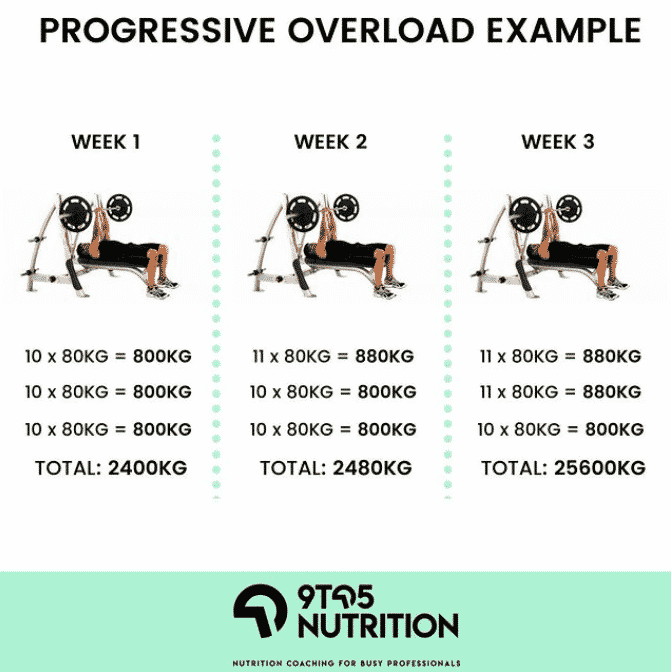

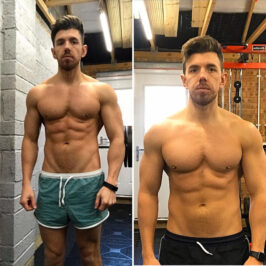

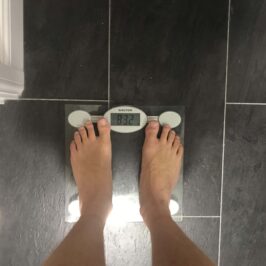
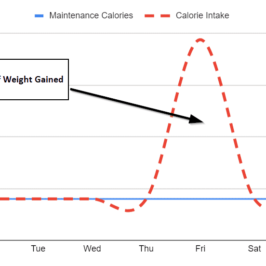
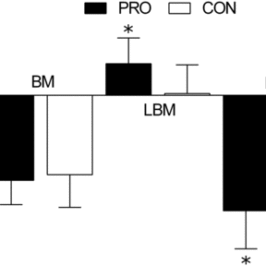
Leave a Reply